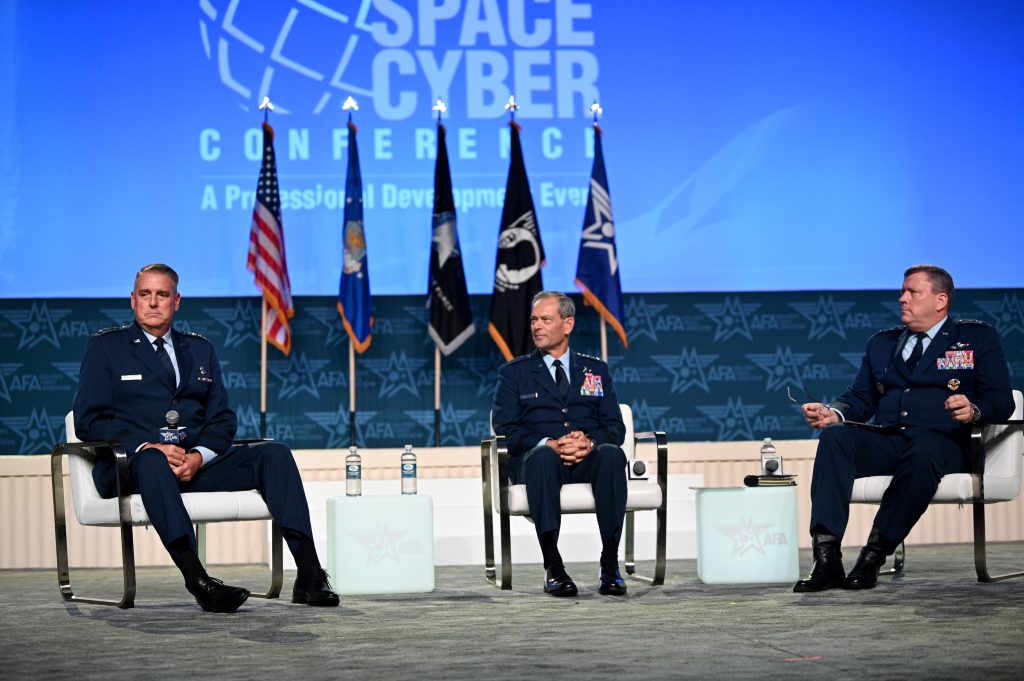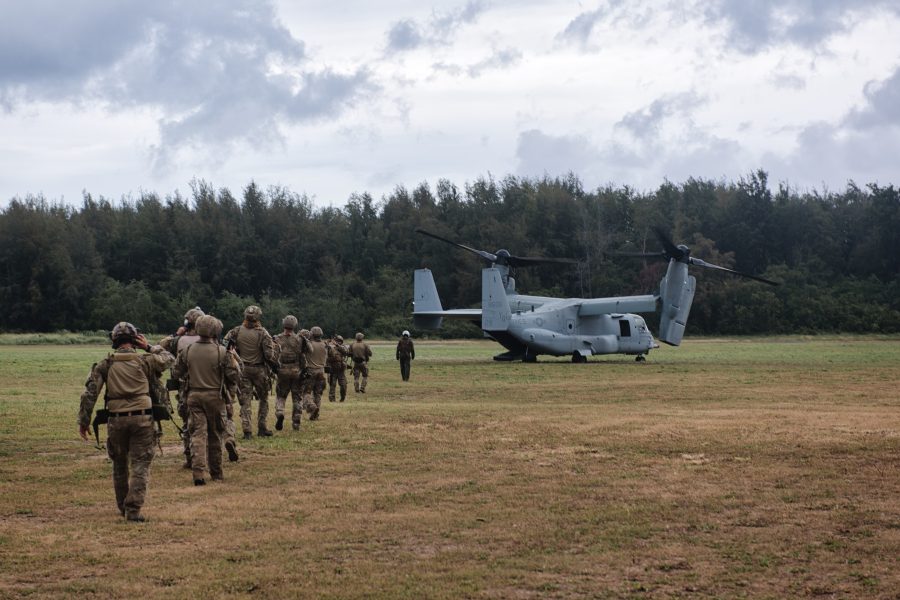To make the Air Force’s concept of Agile Combat Employment work across the vast reaches of the Indo-Pacific, the head of Pacific Air Forces wants to clear jungle that’s overgrown World War II-era airfields while the Air Forces top special operator wants faster vertical lift to move about the theater.
Gen. Kenneth S. Wilsbach, head of PACAF; Gen. Mike Minihan, head of Air Mobility Command; and Lt. Gen. Tony D. Bauernfeind, head of Air Force Special Operations Command all highlighted ACE-focused initiatives during a Sept. 13 panel at AFA’s Air, Space & Cyber Conference.
The Indo-Pacific’s vast scope, ocean distances, and small islands has the Air Force looking to maximize every bit of concrete it can. “A lot of our strategy there is taking some World War II airfields that frankly are overgrown by the jungle, and there’s still concrete or asphalt underneath that jungle,” Wilsbach said. “We scrape the jungle away and now we have an airfield … So we’re not making super bases anywhere. We’re looking for a place to get some fuel and some weapons, maybe get a bite to eat and take a nap and then get airborne again.”
In recent years, Wilsbach said, PACAF studied “every single piece of concrete” across the Indo-Pacific that could be used for ACE operations. The command has also invested in bare-bones facilities like those on the island of Tinian, in the Marianas chain, which were crucial to the U.S. in World War II, with multiple scattered throughout the Pacific.
Yet even if PACAF does not find enough airfields, AFSOC is preparing to operate without runways at all, said Bauernfeind.
“We’re leaning into the acknowledgement that’s been discussed here that our forward operating bases and our runways will be under stress,” Bauernfeind said. “And so we’re approaching this acknowledging that we have to have runway-agnostic capabilities.”
Those include an amphibious MC-130J—a project the Air Force has pursued off and on over the last several years but which Bauernfeind said is “continuing forward” in the engineering phase. It also includes a collaboration between the Defense Advanced Research Projects Agency and U.S. Special Operations Command to develop the Speed and Runway Independent Technologies (SPRINT) program, envisioned as a high-speed aircraft that does not need a runway and could one day replace the CV-22 tiltrotor aircraft, said Bauernfeind.

Such an airframe might be especially necessary in a scenario where runways are destroyed either by adversaries or severe weather. Such a scenario played out this May when Super Typhoon Mawar hit Andersen Air Force Base, Guam, causing roughly $5 million in damage to the airfield, said Wilsbach, who called it a “perfect” ACE exercise.
“I told the 36th Wing team at Guam when I went and visited after the typhoon, I said ‘think about a potential attack by somebody with ballistic missiles and how much damage could happen in one day on the island, and compared to what you experienced with the typhoon, which one would be greater do you think?’” Wilsbach said. “And the typhoon clearly did more damage than a fairly extensive attack might do.”
That typhoon swept through less than two months before the start of Mobility Guardian, AMC’s massive Pacific-focused exercise this summer that also practiced elements of Agile Combat Employment, Minihan noted.
Yet despite these efforts, Wilsbach indicated there is much to do before he would be ready to declare PACAF at full operational capability for ACE.
“Initial Operational Capability, we didn’t have much in the way of bases that were contested,” Wilsbach said. “So the distance wasn’t really contested, the comms wasn’t contested, and you weren’t having to work through [Chemical, Biological, Radiological, Nuclear, and high yield Explosives] types of activity while you were executing ACE.
“As we move closer and closer to FOC, those are the sorts of things that we will ask our Airmen to be able to fight their way through. … You’re going to have logistics challenges, you’re going to have comms challenges. You’re going to have a challenge just surviving on the base from the attacks. And so we’ve got to be able to do all of that, and as we go forward in time, those are all things that we’re practicing.”
Furthermore, Wilsbach said the entirety of PACAF—every base and wing—will need to embrace ACE before he declares full operational capability.
“I asked the Wings to make a ACE a part of their everyday activity in some way, and that’s the way that we will achieve FOC, is if it’s not a special thing that we do every few weeks or every few months, but that we do it every day, and it’s just muscle memory,” said Wilsbach.
